City College
The Free Academy of the City of New York was founded in 1847 by Townsend Harris as a prep school and college that provided free higher education to the children of immigrants and the poor with admission based solely on academic merit. The School's first home was a building designed by James Renwick, Jr. and located on Lexington Avenue at 23rd Street. The school was renamed College of the City of New York in 1866. The growth of the city and the school rendered its downtown building obsolete and the school built a new campus designed by George Brown Post with five English Perpendicular Gothic buildings in Manhattanville between 1903 and 1906.
The campus grew and changed over the 20th Century along with the surrounding neighborhood. The biggest change was the addition in 1953 of the south campus on what had been the Convent of the Sacred Heart. During the 1970s, when the city had a notorious lack of respect for its architectural heritage, many of the older south campus buildings were demolished and replaced with "modern" structures that had little interest in preserving the Gothic campus theme. In the 1970s, construction also began on the North Academic Center which replaced the 6,000-seat Lewisohn Stadium. The NAC, finished in 1984, is a sprawling and confusing structure that has not worn well over the years.
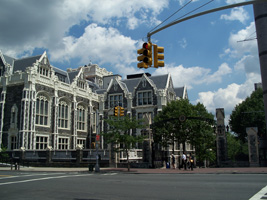
Hudson Gate - 138th Street at Amsterdam Avenue
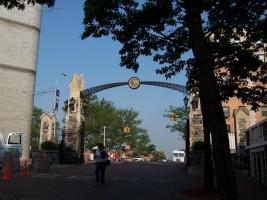
Hudson Gate
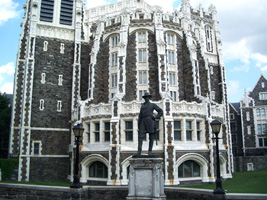
Shepherd Hall, statue of Alexander Webb - President of the College 1869-1902
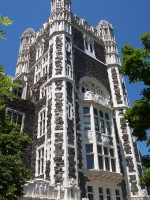
Shepherd Hall tower

Shepherd Hall
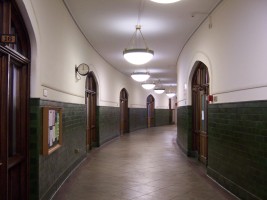
Hallway in Shepherd Hall
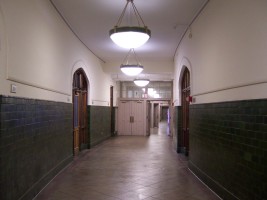
Hallway in Shepherd Hall

Doorway in Shepherd Hall
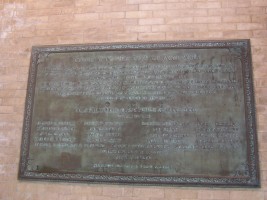
Historic plaque in Shepherd Hall
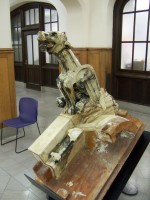
Decomissioned gargoyle in Shepherd Hall
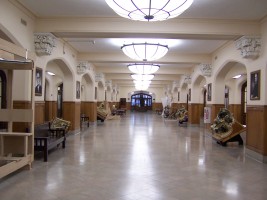
Lobby of Shepherd Hall

Frisbee
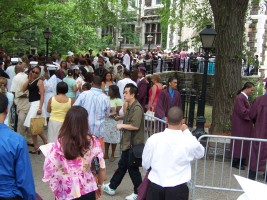
Graduation day

East entrance to the North Academic Center (1984)

Atrium of the NAC
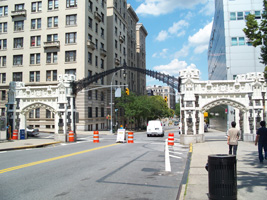
Alexander Hamilton Gate - 140th Street at Convent Avenue
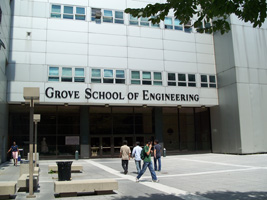
Steinmann Hall (1962) - Grove School of Engineering